Tucked away in the scenic expanse of Argentina’s Patagonia, Monte León National Park is a jewel in the Santa Cruz Region, boasting a deep connection with its vibrant wildlife and a storied past. Established in 2004, this national park marks a significant chapter in conservation, having helped transform the area, once on the brink of ecological collapse, into a sanctuary where wildlife populations are witnessing a resilient comeback. A visit to Monte León National Park with kids will surely be a close encounter with incredible wildlife you will never forget.
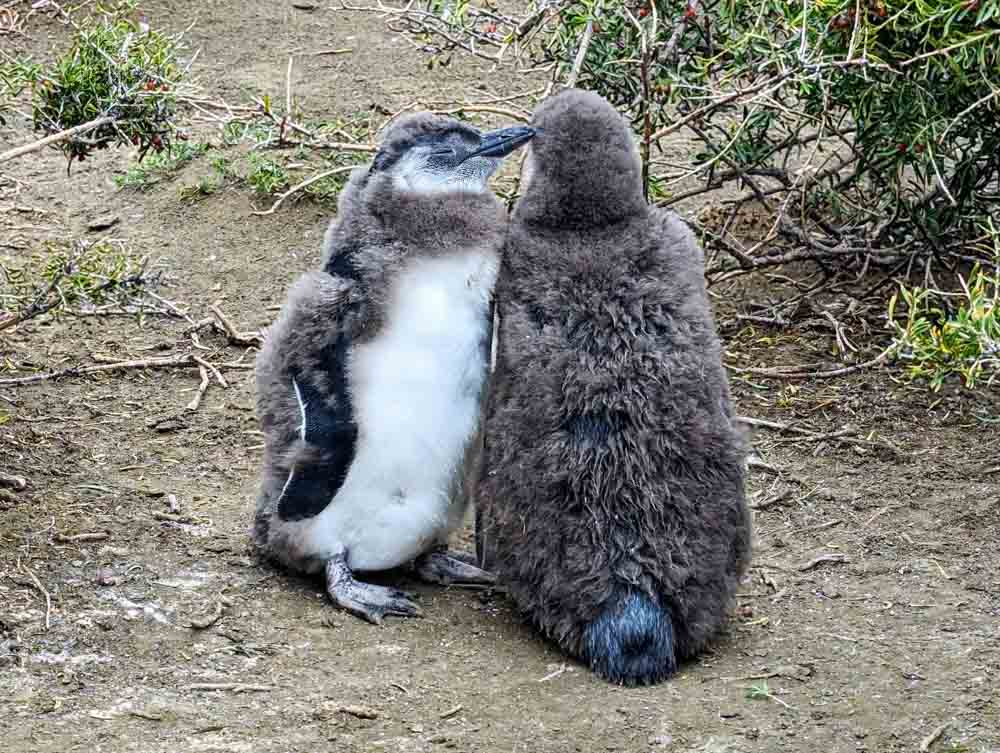
The creation of the national park and the implementation of stringent protective measures have been pivotal in reversing the fortunes of its native species, allowing animal colonies to slowly but surely reclaim their rightful place in the ecosystem. Because of these efforts, a visit with your family at the right time will reward you with an impressive colony of Magellan penguins and sea lions.
Monte León National Park extends beyond its extraordinary wildlife, offering visitors beautiful trails and a rich historical tapestry to explore. The park’s diverse landscapes, from rugged coastlines to gentle meadows, are crisscrossed with paths that invite adventurers of all levels to discover its beauty on foot.
Monte León National Park is an unmissable detour for those journeying through the Santa Cruz Region. This park beautifully punctuates the long drive, offering a refreshing and enriching break amidst nature.
The park’s stunning coastal landscapes and diverse marine ecosystems make it a captivating destination for anyone eager to experience Argentine Patagonia’s oceanic frontier’s unique beauty and ecological diversity.
Our Map For Visiting Monte León National Park With Kids
Getting to Monte León National Park With Kids
To reach Monte León National Park from the north, the park is directly off Route 3, 30 kilometres south of Comandante Luis Piedrabuena and 150 kilometres south of Puerto San Julián.
If you’re coming from the south, you’ll find the park 210 kilometres north of Rio Gallegos.
We could not find anyone offering tours so the only way to visit Monte León National Park is by private transport.
Actually getting into the park is a little tricky. First you need to check in at the Monte Leon Park Ranger Station (see the map above) and then drive the 8 km south to the park entrance.
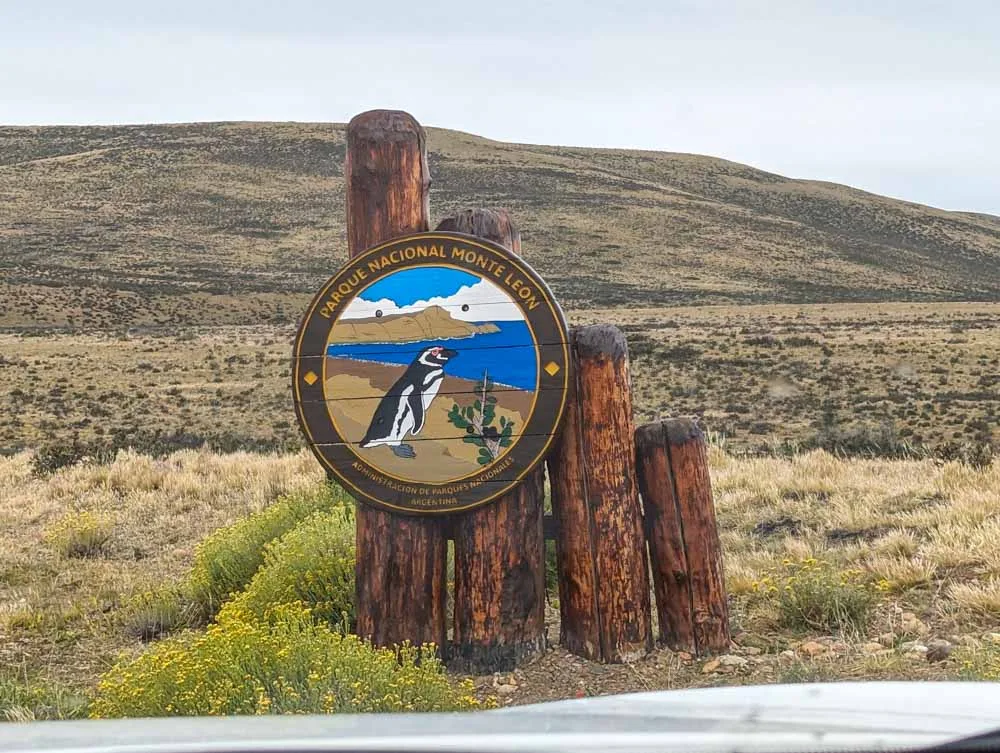
The park’s layout is well-organised, easy to navigate, and offers a wealth of information in both Spanish and English. If you have your own transport, exploring at your own pace without any time constraints is the best way to immerse yourself fully in the park’s offerings.
Arriving at the Park Ranger Station And Getting Into Monte León National Park
The Park Ranger Station and Information Centre are next to Monte Leon Estancia. It’s essential to make a stop here and register when you arrive.
The office operates seven days a week. Housed within a converted sheep shed, it now serves as a small information centre. While the park rangers are incredibly friendly and helpful, it’s worth noting that only a few of them speak English.
There is no entry fee required when visiting Monte Leon, setting it apart from many of the National Parks in Patagonia we’ve visited.
After registering, return to Ruta 3 and continue driving 8 km further south to reach the Monte León National Park entrance. Upon arrival, you’ll find double gates that are closed. You have to open the gates, drive through, and close them after passing.

At this point, if you are using Google Maps, it might try to convince you to turn off Route 3 too early onto a long-abandoned track. Ignore this and stay on Ruta 3 until you pass a dried-up lake bed and turn onto Route 63.
Route 63 is a gravel track that extends for approximately 16 kilometres towards the coast, taking around 25 minutes to traverse, all the while offering captivating views of the steppe.
Be aware that following rainfall, the road can become quite slippery and, in some places, precarious. This is especially true as you pass through Guanaco Canyon, which features some of the largest herds of guanacos we’ve encountered.
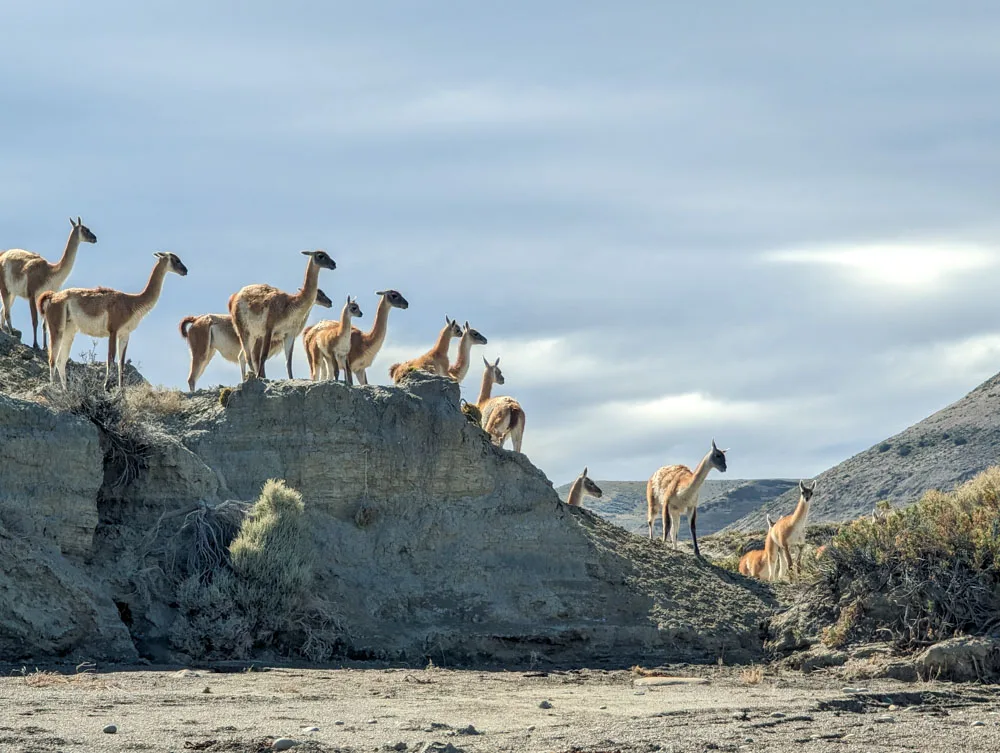
Thing To See In Monte León National Park With Kids
Monte Leon National Park offers a variety of captivating viewpoints and trails, each thoughtfully marked on the map and well-signposted within the park. Below are the official areas of interest, it’s essential to respect the conservation efforts and stick to designated trails. However, it’s worth noting that the entire park is a natural wonder that you can appreciate as you drive through.
Viewpoint of the Lion’s Head
‘Mirador Cabeza Del Leon’ is the first stop you will reach along Route 63. It is a viewpoint of a distinctive rock formation said to resemble a lion’s head or a sphinx, although if we are honest, we could not see it!
Despite the abstract comparison, it’s worth a brief 25-meter walk from the road to appreciate the view as it provides a pleasant vantage point to soak in the surrounding beauty.
Penguin Colony Trail
Among the park’s main highlights, the Penguin Colony Trail was one of the standout adventures during our entire Patagonian journey. The start point to the trail is just a few minutes further along Route 63 from Mirador Cabeza Del Leon. This 2.5-kilometer easy trail leads you toward the coast, where you’ll hear the lively chorus of penguins, reaching its peak as you approach the shore.
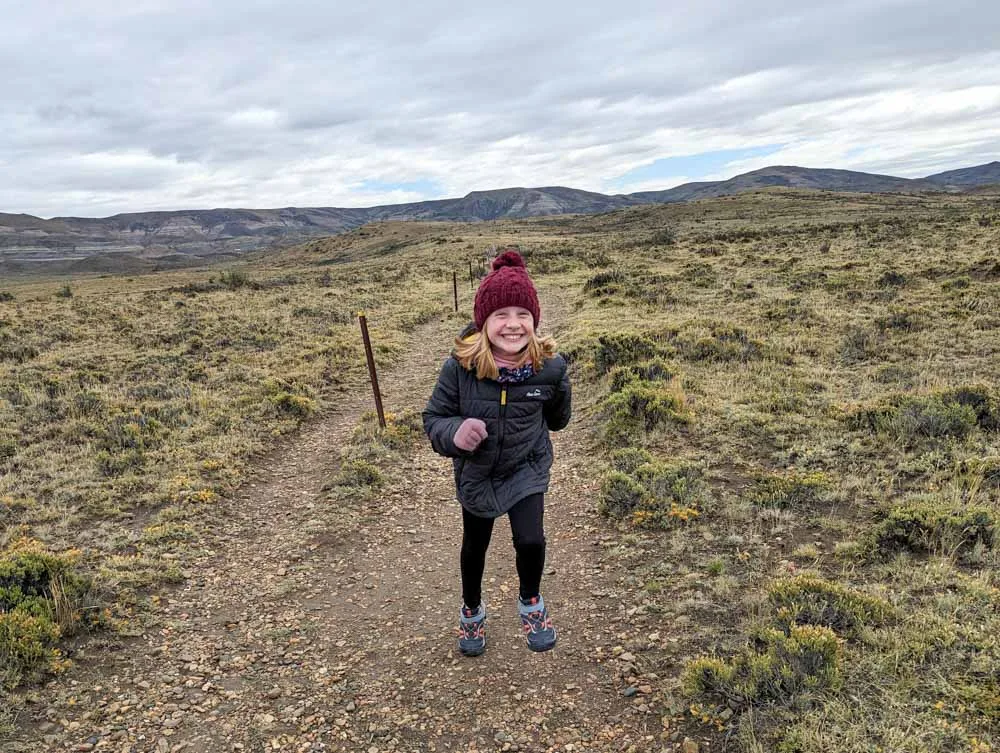
The penguins are present from spring to autumn, with breeding pairs laying eggs in October, followed by approximately 40 days of incubation. Our mid-January visit allowed us to witness young penguins nearly matching their parents’ size, shedding their baby feathers.
The trail culminates in a viewpoint overlooking the beach, where hundreds of penguins play in and out of the sea.
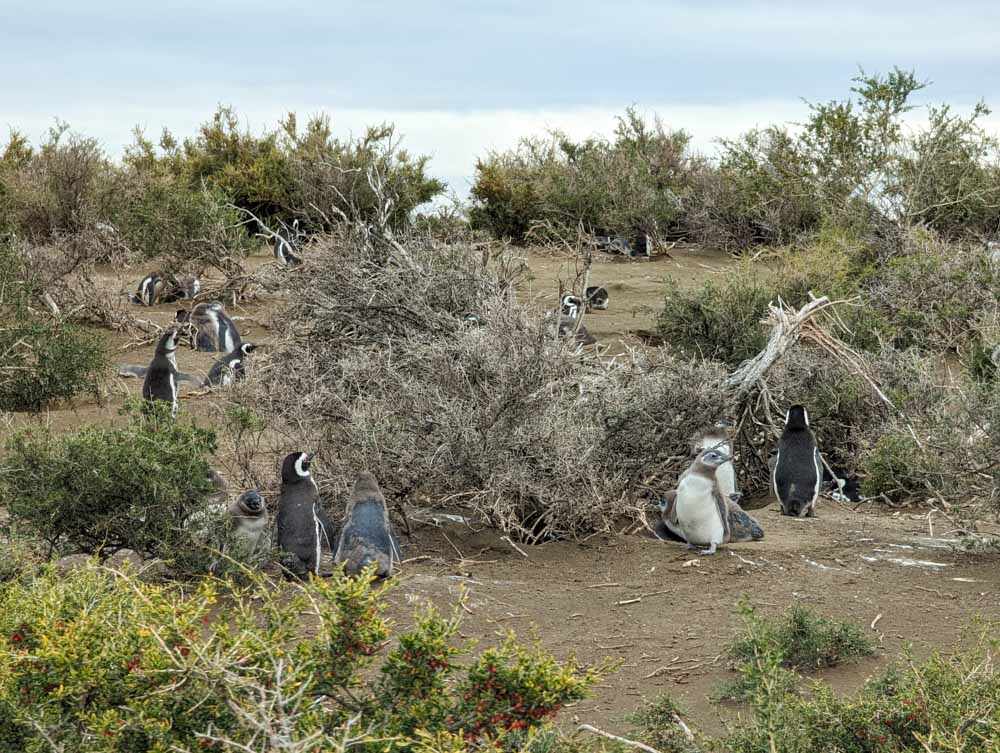
The real treasure lies along the path, where nesting birds with their offspring come within arm’s reach, occasionally causing you to pause and let them pass.
Unlike the king penguins of Parque Pingüino Rey, which stress easily, Magellanic penguins don’t seem too bothered by human presence.
Trail to the Lion’s Head & Sea Lions:
A mere five-minute drive along the road, a right-hand turn leads to the next car park. A 400-meter boardwalk gently ascends to Lion’s Head Point, offering views of a non-breeding colony of sea lions basking on the rocks. We spent considerable time observing them as they lounged, climbed the rocks, and playfully slid into the sea. It’s hard to believe that the 300-strong colony you see today was almost completely wiped out back in the 1940’s as they were slaughtered for oil.
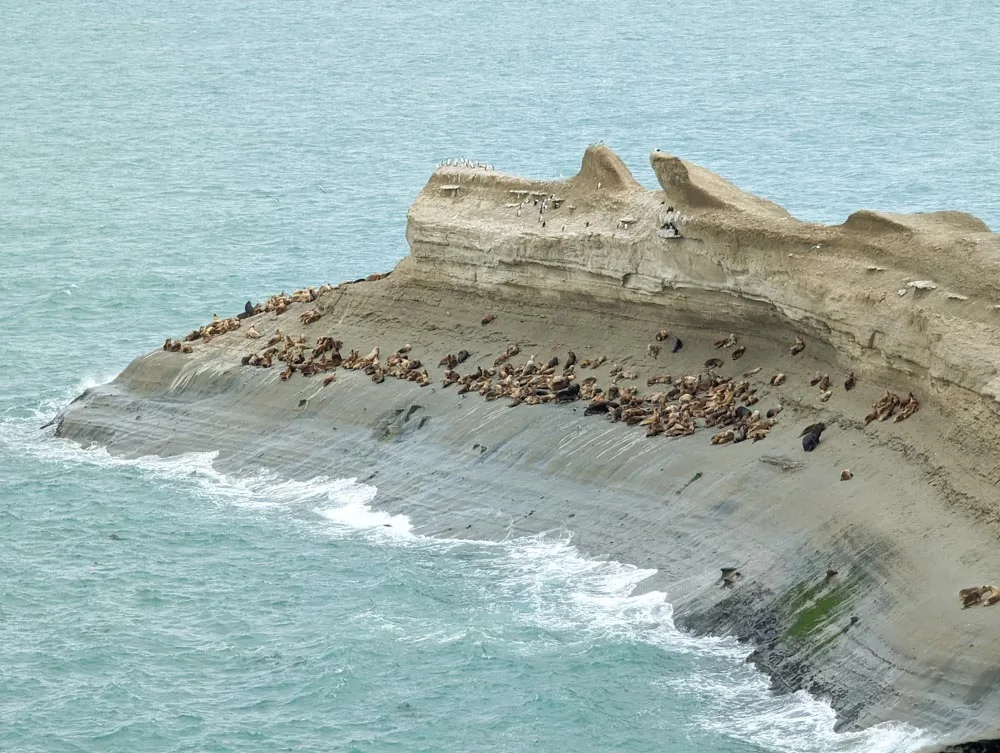
Monte Leon Island Viewpoint
A short drive along the main track leads to the next viewpoint. Here, the sandstone formations, eroded by the coast, provide a sanctuary for hundreds of gulls. Informative displays recount a checkered history of human impact, including the destruction of breeding nests for the guano and seaweed to use as fertilizer. Here is another sign that the protection of the park has helped the regrowth of this colony of birds, as the island is now buzzing with life.
The Beach & Cliffs Walk
The final stop within the park is at the ranger station and campsite, situated by the beach. During low tide, you can stroll along the rocky beach and explore the tide pools—a delightful way to finish your day. You’ll also find the park’s only restroom facilities are located here, although they are not the best-maintained.
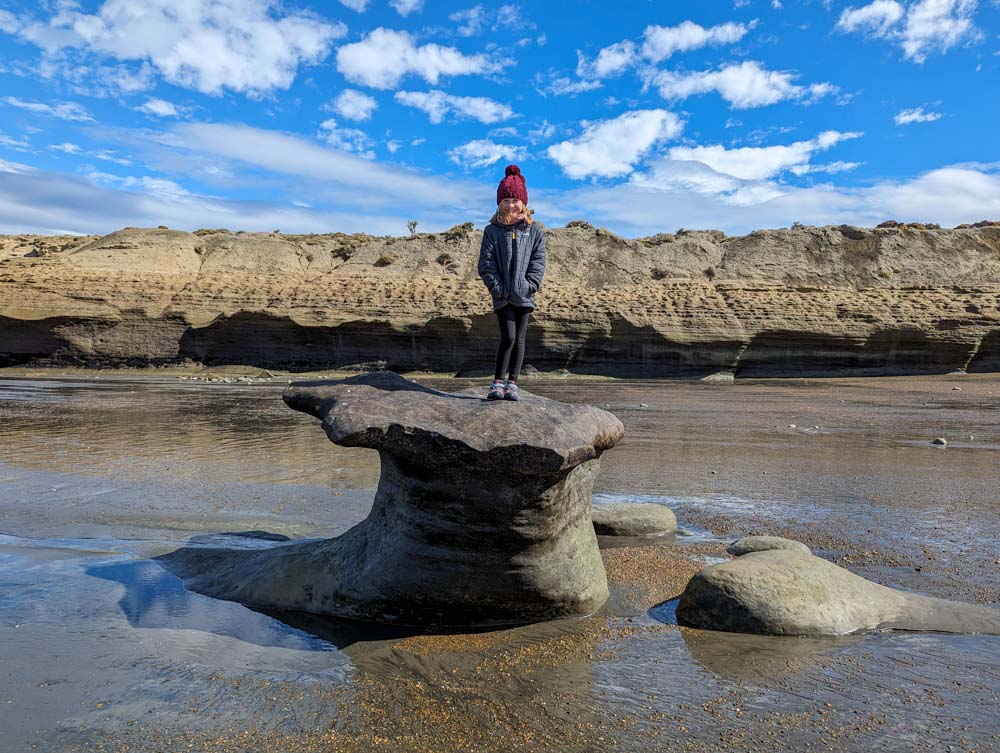
Have We Missed Anything To Do at Monte León National Park With Kids?
As part of our ongoing quest to see as many of Patagonias penguins as possible, Monte León National Park was a real treat. Unlike Peninsular Valdes or Punto Tombo, the parks isolation gives you a far less managed experience.
We hope you have a great trip here, if you think we have missed anything or you find any info here to be outdated, please let us know in the comments below.
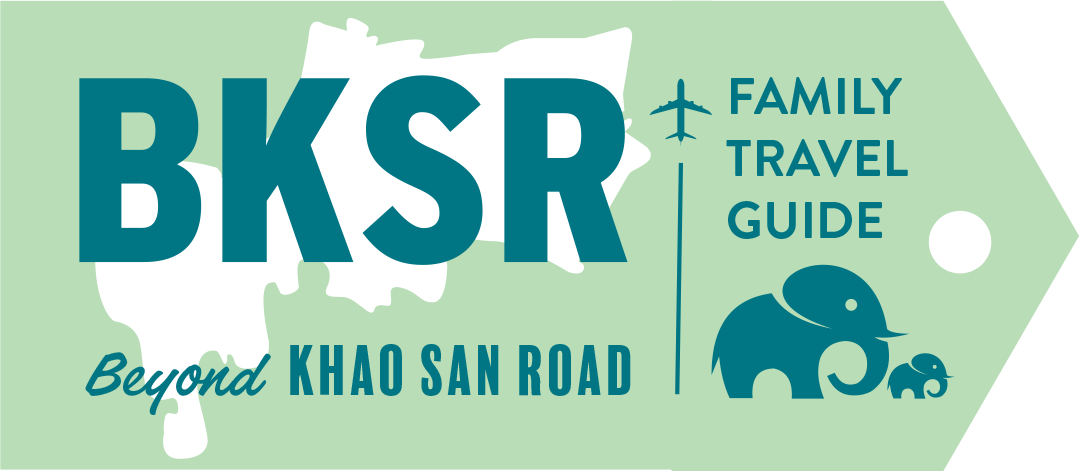

where did you stay ?
Hi!
We had planned to stay at Monte Leon Estancia but it closed down between our booking and arrival!
We ended up staying in Comandante Luis Piedrabuena, at Primitivo Restaurante y Alojamiento. Basic but clean and cheap cabana!